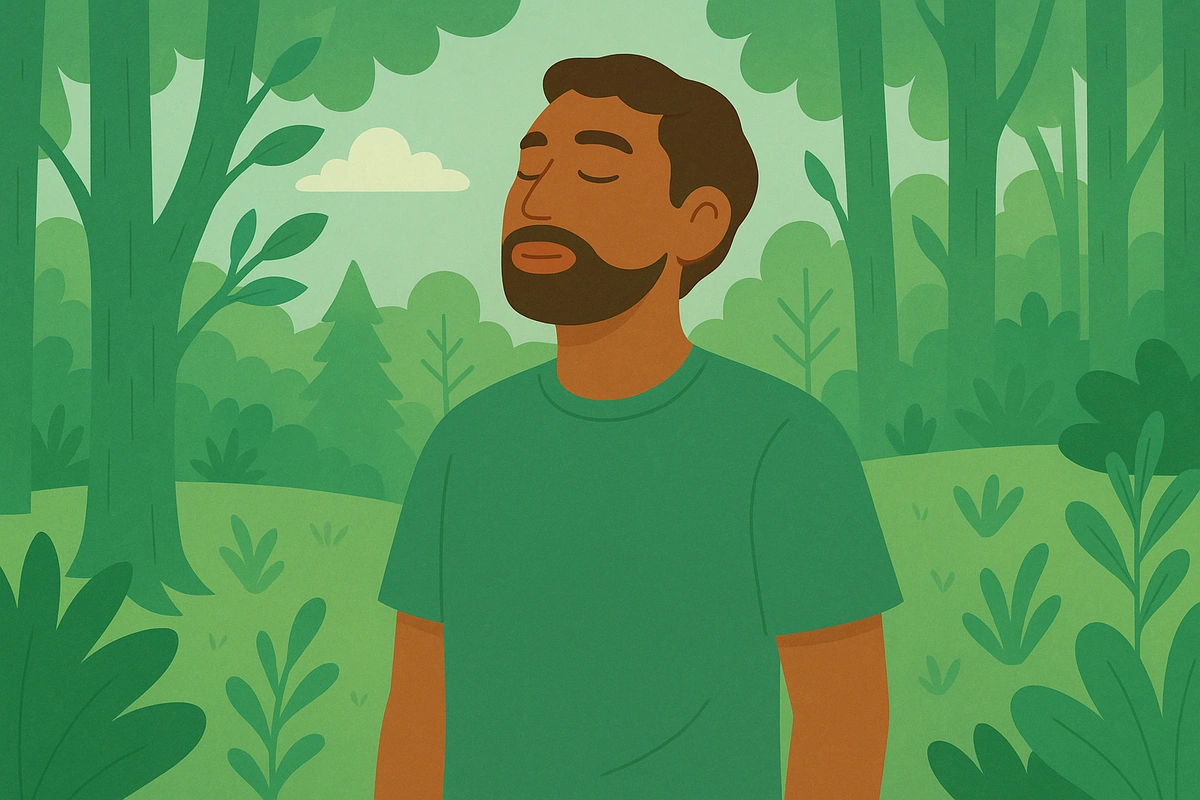Nature exposure involves intentionally spending mindful time in natural environments to activate your body's natural stress recovery systems and enhance emotional well-being. This evidence-based practice harnesses your brain's innate connection to the natural world, reducing anxiety and depression while improving focus, mood, and overall mental resilience.

Nature exposure means deliberately immersing yourself in natural environments through mindful awareness and sensory engagement with your surroundings. Rather than simply being outdoors, this practice involves intentionally connecting with nature through all your senses, allowing the natural world to restore your mental and emotional equilibrium.
Your brain is evolutionarily wired to find comfort and restoration in natural settings, but modern life often disconnects you from these healing environments. Research consistently shows that even brief periods of mindful nature exposure can significantly reduce stress hormones, lower blood pressure, and improve mood. This isn't just about "getting fresh air" - it's about actively engaging with nature in ways that allow your nervous system to shift from stress mode into restoration mode, creating measurable improvements in both mental and physical well-being.
Nature exposure works by activating multiple biological and psychological systems that promote healing and restoration. When you mindfully engage with natural environments, your body automatically shifts from the sympathetic nervous system's "fight or flight" mode into the parasympathetic "rest and digest" state, triggering measurable physiological changes that improve both mental and physical health.
Stress Recovery Theory explains that humans have an innate, evolutionary response to natural environments that promotes rapid stress recovery. Your nervous system recognizes natural settings as inherently safe, leading to decreased cortisol production, lowered blood pressure, and reduced muscle tension within minutes of mindful nature exposure.
The practice also leverages Attention Restoration Theory, which describes how natural environments provide "soft fascination" - interesting but not overwhelming stimuli that allow your brain's attention centers to rest and recover. Unlike urban environments that demand constant vigilant attention, nature allows your mind to shift into a more relaxed, open awareness that restores mental energy and improves focus.
Biophilia - your innate affinity for living systems - means that connecting with plants, animals, and natural processes triggers positive emotional responses at a deep biological level. This connection releases endorphins and activates reward pathways in your brain, creating genuine feelings of well-being and contentment.
Research shows that natural environments also contain phytoncides - airborne chemicals released by plants that have measurable effects on human physiology. Breathing these compounds can boost immune function, reduce inflammation, and decrease stress hormones for days after exposure, explaining why even brief nature experiences can have lasting benefits.
The practice works on rumination and negative thought patterns by providing what psychologists call "cognitive restoration." When your attention is gently captured by natural beauty, sounds, and sensations, the brain regions associated with self-critical thinking and worry become less active, breaking cycles of anxious or depressive thoughts.
Most importantly, nature exposure helps regulate your circadian rhythms through natural light exposure, improving sleep quality and mood regulation. This biological clock regulation has cascading effects on hormone production, immune function, and emotional stability.
"I feel restless or bored during nature time" - This is normal, especially when starting the practice. Your mind is used to constant stimulation and may resist the gentler pace of nature. Start with shorter sessions (10-15 minutes) and focus on one sense at a time rather than trying to take in everything at once.
"I don't have access to 'real' nature where I live" - Even small natural elements can provide benefits. Urban trees, potted plants, community gardens, or even nature videos can activate restorative responses. The key is mindful attention to living, growing things rather than perfect natural settings.
"My mind keeps racing with worries even in nature" - Use this as mindfulness practice rather than fighting the thoughts. When you notice worry thoughts, gently redirect attention to immediate sensory experiences - the feeling of air on your skin, sounds around you, or colors you can see.
"I don't feel the benefits that other people describe" - Individual differences in nature connection affect how much benefit people receive. Try different natural environments, times of day, and approaches (active vs. sedentary) to find what works best for your unique nervous system and preferences.
"I feel unsafe or uncomfortable in outdoor spaces" - Safety is essential for restoration. Choose well-populated areas during daylight hours, bring a trusted companion, or start with very familiar outdoor spaces. Even a few minutes in a safe natural setting provides benefits.
"I feel guilty taking time for this when I have responsibilities" - Remember that nature exposure improves your functioning in all areas of life. This is preventive healthcare that makes you more effective, creative, and resilient in handling responsibilities rather than time away from them.